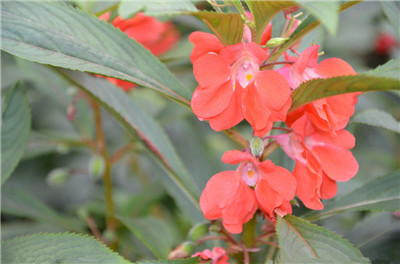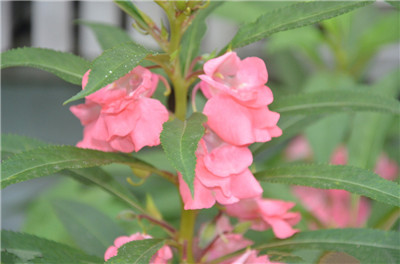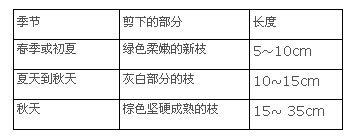How to grow Chinese impatiens
There are two common kinds of impatiens, Chinese Impatiens and African Impatiens. Chinese Impatiens is often referred to as henna, bone-penetrating grass, and so on. The flowers are white, pink, orange, copper red, etc., and the flower patterns are single and double, which are suitable for potted plants. This article starts with sowing to say how to grow Chinese impatiens, for flower friends' reference.
-, maintenance
Why first talk about conservation, because some flower friends may have planted Chinese impatiens when they read this article, so let's start with the conservation of Chinese impatiens. In fact, Chinese impatiens are very easy to raise. In the process of conservation, we should ensure that there is light, not lack of water, and ensure the water permeability of the soil. If the water permeability is good, the seedlings may be wilted in the sun at noon in summer, so they should be properly shaded. There is nothing else to pay special attention to.
Seedling maintenance: cotyledon stage to keep the matrix moist, not dry, but should not be too waterlogged, to avoid the occurrence of "sudden fall disease". It is necessary to control the water in the true leaf stage, the dry surface of the substrate can be drenched with water, and the primary true leaves can be transplanted after they are unfolied. of course, if the amount of your planting is small, you can direct seeding, and it is more conducive to the health of the root system without transplantation.

Seedling maintenance: watering enough water before transplanting, and then transplanting with soil blocks, planting depth should be at the original depth or slightly deep-point, watering immediately, proper shading should be done for a few days in summer, and normal maintenance can be done after-weeks, but no dry leaves need to be watered. After 2 true leaves are regenerated, a small amount of fertilizer can be irrigated to promote growth, fertilization is best and nutritious, and more larger flowers can be obtained.
Impatiens is easy to raise, as long as you keep enough light, no drought, no waterlogging, and fertilize a small amount of fertilizer for many times.
Impatiens seed harvesting: because the impatiens fruit will crack and put the seed bullet in all directions, it belongs to the mechanical transmission of seeds, so if you want to collect seeds, you can look for them at the bottom of the basin or around them, or harvest them before the seeds burst.
Planting, sowing
The sowing time is between spring and autumn, and the ambient temperature is 22-26 degrees Celsius and the humidity is 50-85%. Sowing is required when the light is sufficient, but the substrate should be arranged in advance, there should be no big soil bumps, and it should be smooth and fine. avoid "eating seeds". Sprinkle the seedbed matrix with enough water, sow the seeds evenly after the water is completely seeped, then cover the fine sand or vermiculite with a thickness of 0.5-0.8 cm, and sprout in 5-6 days.
Chinese Impatiens how to grow Impatiens there are two kinds of Chinese Impatiens and African Impatiens. Chinese Impatiens is often referred to as henna, osseous grass, etc., flowers are white, pink, orange, copper red, etc., there are single and double flower patterns, suitable for potted plants, this article starts from sowing to say how to grow Chinese impatiens, for flower friends' reference. First, why to talk about conservation first, because some flower friends may have planted Chinese impatiens when they read this article, so we start with the conservation of Chinese impatiens. In fact, Chinese impatiens are very easy to raise. In the process of conservation, it is necessary to ensure that there is light, not lack of water, and ensure the water permeability of the soil. If the water permeability is good, the seedlings may be wilted at noon in summer, so they should be properly shaded. There is nothing else to pay special attention to. Seedling maintenance: cotyledon stage to keep the matrix moist, not dry, but should not be too waterlogged, to avoid the occurrence of "sudden fall disease". It is necessary to control the water in the true leaf stage, the dry surface of the substrate can be drenched with water, and the primary true leaves can be transplanted after they are unfolied. of course, if the amount of your planting is small, you can direct seeding, and it is more conducive to the health of the root system without transplantation. Seedling maintenance: watering enough water before transplanting, then transplanting with soil blocks, planting depth should be at the original depth or a little deeper, watering immediately, proper shading should be done for a few days in summer, normal maintenance can be done after a week, no need to water, and fertilizer can be irrigated a small amount after 2 true leaves are regenerated to promote growth, fertilization is best and nutritious, and more larger flowers can be obtained. Impatiens is easy to raise, as long as you keep enough light, no drought, no waterlogging, and fertilize a small amount of fertilizer for many times. Impatiens seed harvesting: because the impatiens fruit will crack and put the seed bullet in all directions, it belongs to the mechanical transmission of seeds, so if you want to collect seeds, you can look for them at the bottom of the basin or around them, or harvest them before the seeds burst. Second, the sowing time is generally spring and autumn, and the ambient temperature is 22: 26 ℃ and the humidity is 50: 85%. Sowing is required when the light is sufficient, but the substrate should be arranged in advance, there should be no big soil bumps, it should be smooth and fine, and avoid "eating seeds". Sprinkle the seedbed matrix with enough water, sow the seeds evenly after the water is completely seeped, then cover the fine sand or vermiculite with a thickness of 0.5-0.8 cm, and sprout in 5-6 days. How to grow Chinese Impatiens Culture skills and points for attention
Impatiens was praised by many poets in ancient times. The shape of Chinese impatiens is very lovely. Let's learn more about Chinese impatiens and see how to grow them.
How to grow Chinese impatiens
When will Chinese impatiens blossom
Chinese impatiens can blossom between June and August every year, and then produce fruits similar to the shape of peaches. After that, Chinese impatiens will bear seeds and reproduce, so the time of seed collection needs to be controlled.
Second, how to plant Chinese impatiens-- sowing seeds
The suitable temperature for planting Chinese impatiens is about 22 degrees, and the humidity needs to be controlled at about 50 percent. Adequate light is the premise. Sow the seeds after the land is leveled, and the seedlings can be cultivated in about 5 days.
Third, how to grow Chinese impatiens-- maintenance at seedling stage
The seedlings of Chinese impatiens should be protected by humidity and should not be too dry or too wet. Impatiens balsamina needs to be treated with water control at the stage of seedling growth. After the leaves are spread out, if the planting quantity is not large, there is no need to move the basin, otherwise the water control treatment should be carried out at the same time after the basin is moved.
4. How to grow Chinese Impatiens-- Seedling maintenance
Pour water before moving the basin, and then transplant it with the basin soil. The depth of transplantation is better, and then pour enough water, wait until the seedlings grow new leaves, and then irrigate a small amount of fertilizer and water to promote growth.
- Prev

How to cultivate impatiens?
Chairman Mao once said in the poem "chanting henna" that I only love my fingernails, so my ambition is stronger. Impatiens is easy to grow and not easy to wither, with strong survival and good adaptability. It does not choose the environment,-people are free to sow a few seeds into the mud. As long as there is water and no fertilizer is needed, they will break the soil and grow. Its stems and leaves are thick and moist.
- Next

How to cut Rosemary
Rosemary cuttings can be cut in soil or in water, and then planted in soil after rooting. Flower friends can choose their own cutting methods. Rosemary water rooting method: 1. Cut new twigs from healthy and luxuriant rosemary with clean scissors, and pay attention to avoid twigs with flowers.
Related
- Fuxing push coffee new agricultural production and marketing class: lack of small-scale processing plants
- Jujube rice field leisure farm deep ploughing Yilan for five years to create a space for organic food and play
- Nongyu Farm-A trial of organic papaya for brave women with advanced technology
- Four points for attention in the prevention and control of diseases and insect pests of edible fungi
- How to add nutrient solution to Edible Fungi
- Is there any good way to control edible fungus mites?
- Open Inoculation Technology of Edible Fungi
- Is there any clever way to use fertilizer for edible fungus in winter?
- What agents are used to kill the pathogens of edible fungi in the mushroom shed?
- Rapid drying of Edible Fungi

